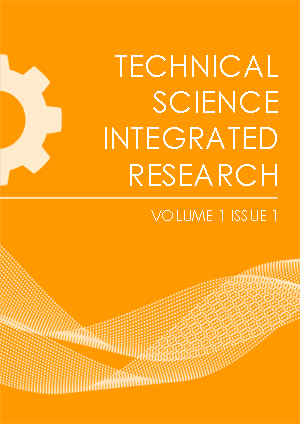Abstract
The escalating demand for sustainable power sources in microelectronic devices has spurred significant research into energy harvesting techniques that convert ambient energy into electrical power. These approaches aim to reduce dependence on conventional batteries and enable autonomous operation of devices in remote or maintenance-challenging environments. This article explores a range of energy harvesting methods - including piezoelectric, thermoelectric, photovoltaic, radiofrequency, and biochemical techniques - highlighting their operational principles, integration challenges, and application domains. Emphasis is placed on material innovations, power management strategies, and the design constraints involved in embedding these technologies within compact, low-power systems. As microelectronics evolve toward higher efficiency and intelligence, the integration of energy harvesting emerges as a pivotal enabler for sustainable and self-powered electronic ecosystems.
References
Riaz, A., Sarker, M. R., Saad, M. H. M., & Mohamed, R. (2021). Review on comparison of different energy storage technologies used in micro-energy harvesting, WSNs, low-cost microelectronic devices: challenges and recommendations. Sensors, 21(15), 5041.
Mateu, L., & Moll, F. (2005, June). Review of energy harvesting techniques and applications for microelectronics. In VLSI circuits and systems II (Vol. 5837, pp. 359-373). SPIE.
Selvan, K. V., & Ali, M. S. M. (2016). Micro-scale energy harvesting devices: Review of methodological performances in the last decade. Renewable and Sustainable Energy Reviews, 54, 1035-1047.
Emilio, M. D. P. (2017). Microelectronic circuit design for energy harvesting systems (Vol. 1). Berlin: Springer.
Rahmani, H., Shetty, D., Wagih, M., Ghasempour, Y., Palazzi, V., Carvalho, N. B., ... & Grosinger, J. (2023). Next-generation IoT devices: Sustainable eco-friendly manufacturing, energy harvesting, and wireless connectivity. IEEE Journal of Microwaves, 3(1), 237-255.
Ryu, H., Yoon, H. J., & Kim, S. W. (2019). Hybrid energy harvesters: toward sustainable energy harvesting. Advanced Materials, 31(34), 1802898.
Nor, N. M., Hamzah, H. H., & Razak, K. A. (2021). Recent advancement in sustainable energy harvesting using piezoelectric materials. In Sustainable Materials for Next Generation Energy Devices (pp. 221-248). Elsevier.
Tan, Y. K., & Panda, S. K. (2010). Review of energy harvesting technologies for sustainable wireless sensor network. Sustainable wireless sensor networks, 2010, 15-43.
Sarker, M. R., Riaz, A., Lipu, M. H., Saad, M. H. M., Ahmad, M. N., Kadir, R. A., & Olazagoitia, J. L. (2024). Micro energy harvesting for IoT platform: Review analysis toward future research opportunities. Heliyon, 10(6).
Benecke, S., Rückschloss, J., Nissen, N. F., & Lang, K. D. (2012, September). Energy harvesting on its way to a reliable and green micro energy source. In 2012 Electronics Goes Green 2012+ (pp. 1-8). IEEE.
Bhaskaran, M., Sriram, S., & Iniewski, K. (Eds.). (2014). Energy harvesting with functional materials and microsystems. CRC Press.
Iqbal, M., Khan, F. U., Mehdi, M., Cheok, Q., Abas, E., & Nauman, M. M. (2022). Power harvesting footwear based on piezo-electromagnetic hybrid generator for sustainable wearable microelectronics. Journal of King Saud University-Engineering Sciences, 34(5), 329-338.

This work is licensed under a Creative Commons Attribution 4.0 International License.

